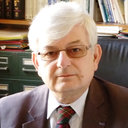New Metal-Carbon Heterostructures with Enhanced Relaxivity for MRI Applications
Author(s): Vasily T Lebedev, Natalia P Yevlampieva, Maria V Popova, Mikhail A Vovk, Alexander V Shvidchenko, Biligma B Tudupova, Victor I Kuular
Heterostructures of fullerenols Fe@C60(OH)30, Gd@C82(OH)30, Ho@C82(OH)40 with 4f and 3d metals in carbon cages and detonation nanodiamonds have been synthesized for prospect applications in Magnetic Resonance Imaging, Photodynamic Therapy and Nuclear Medicine using radioactive isotopes. We used fullerenols obtained by hydroxylation of endofullerenes produced in electric arc and nanodiamonds DNDZ+ and DNDZ- (size ~ 4.5 nm, positive (negative) potential in water 30-70 mV), chemically purified and annealed in hydrogen (air) flows. In aqueous mixtures with diamonds, fullerenols via hydroxyls formed hydrogen bonds with the H, OH, COOH groups on diamond surface. The association of components was facilitated by hydrophobic interactions and electrostatic attraction if DNDZ+ diamonds with positive surface charge were used. Aqueous dispersions of the complexes with magnetic atoms (Gd, Ho, Fe) at the temperature of 298 K have been studied by NMR. We corrected the measured reciprocal times of proton spin longitudinal and transverse relaxation (1/T1,1/T2) to water contributions (1/T1,2W) and defined the relaxation rates r1,2= [1/T1,2 - 1/T1,2W]. Normalizing them to metal concentrations (CM) we got the differential relaxivities Δr = (r2-r1)/CM showing the MRI contrast abilities of substances. The complexes Gd@C82(OH)X+DNDZ-, Ho@C82(OH)X+DNDZ+ with Δr ~20 s-1mM-1 and Δr ~ 24 s-1mM-1 are for ~ 6 and ~ 3 times and the complexes Fe@C60(OH)X+DNDZ- with Δr ~ 52 s-1mM-1 for ~ 12 times more efficient than pure fullerenols. Thus, the diamond platforms allowed greatly enhance the relaxivity of fullerenols.


 Impact Factor: * 3.0
Impact Factor: * 3.0 Acceptance Rate: 76.32%
Acceptance Rate: 76.32%  Time to first decision: 10.4 days
Time to first decision: 10.4 days  Time from article received to acceptance: 2-3 weeks
Time from article received to acceptance: 2-3 weeks 
